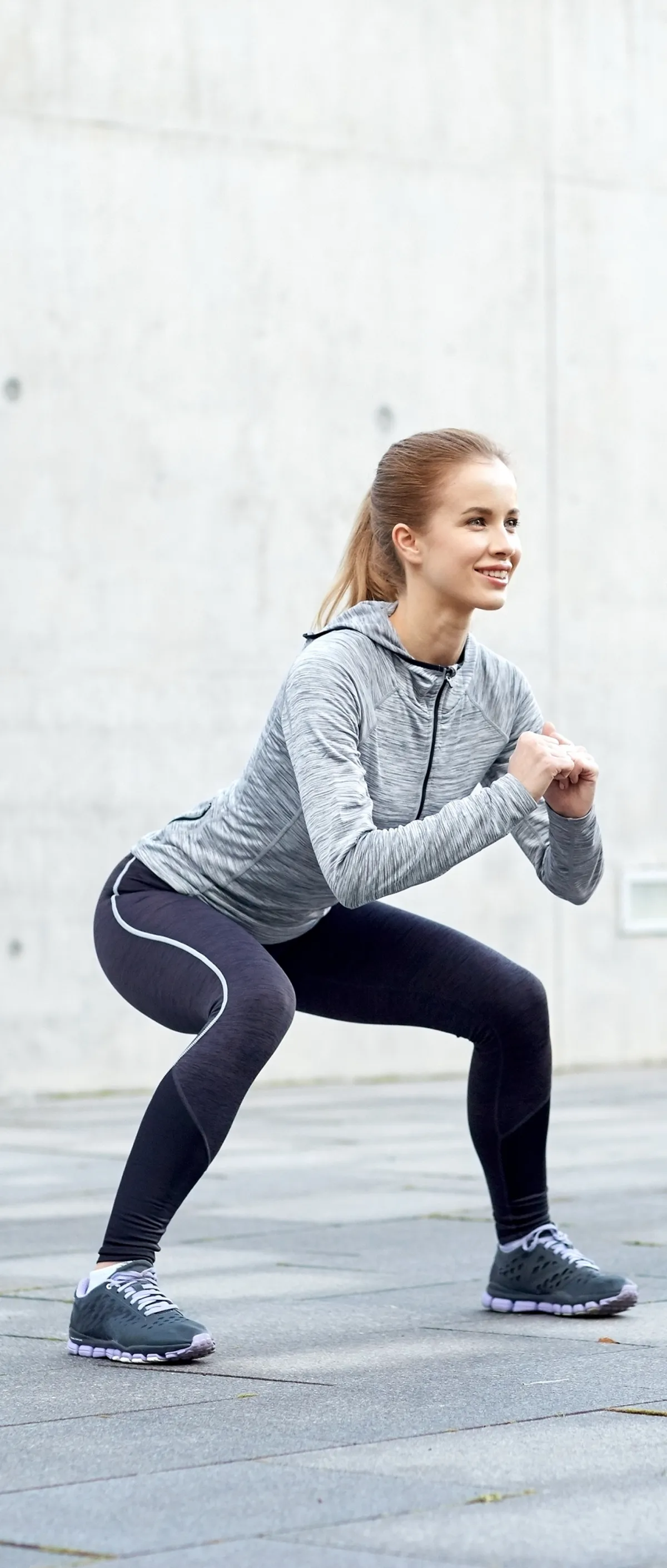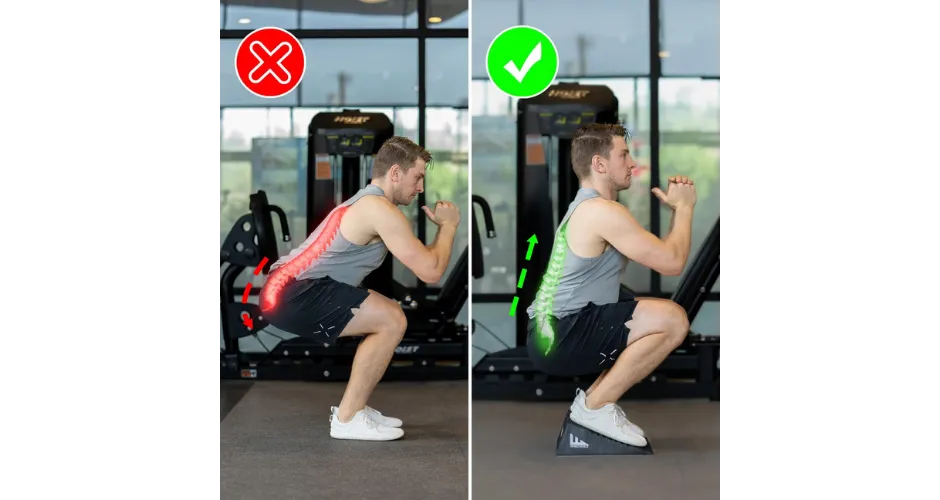Unlock a Deeper, Stronger Squat: How and Why to Use Heel Wedges
June 30, 2025
Sign up to receive regular emails like this
Sign up to receive regular emails like this
Get regular emails from Dr. Connie Hutchins filled with expert tips on injury prevention, movement, and overall health.

If you’ve ever struggled to get low in a squat without your heels lifting or your lower back compensating, you’re not alone. Limited ankle mobility is one of the most common barriers to a strong, pain-free squat — and that’s where heel wedges come in.
What Are Heel Wedges?

Heel wedges are simple tools — often made of foam, rubber, or metal — that slightly elevate your heels during squats. This small change can make a big difference in how your body moves and feels. By tipping your body just a few degrees forward, wedges shift the demand off stiff ankles and allow your knees and hips to work more freely.
Why Wedges Work
Many runners, lifters, and everyday athletes lack full ankle dorsiflexion — the motion needed to bring your shin over your foot. Tight calf muscles, stiff ankle joints, or previous injuries can all limit this. When your ankle doesn’t move well, your body finds ways to compensate: arch collapse, knee valgus, torso tipping forward, or even pain in the knees, hips, or low back.
Elevating the heel with a wedge:
• Takes stress off the ankle and Achilles
• Reduces the range needed from the ankle joint
• Allows a more upright torso
• Enables deeper, more stable squatting mechanics
If your squat instantly improves with a wedge, that’s not cheating — it’s information. It tells us your ankles need attention.
Why Wedges Work
If you’re only replacing water and not electrolytes, you’re diluting the concentration of sodium in your blood. This can lead to hyponatremia, a dangerous and sometimes life-threatening condition. Even mild electrolyte imbalances can leave you feeling sluggish, dizzy, or unable to recover well from workouts.
When and How to Use Wedges
You can use wedges as:
• A warm-up tool to access better form and feel your depth
• A training tool during strength workouts to load with better alignment
• A diagnostic tool to check how much ankle motion is limiting your squat
Best practices:
• Place the wedge under your heel only, not the entire foot.
• Start with bodyweight squats to feel the difference.
• Progress to goblet or barbell squats as comfort and strength improve.
• Don’t push through pain — wedges help you move better, not force bad form.
Pro Tip from Dr. Connie: If your heels lift during a bodyweight squat or you struggle to keep your chest upright, try wedges for 1–2 weeks and note the difference in depth and joint comfort.
Don’t Stop at the Wedge — Fix the Root Cause
Wedges are like a crutch — helpful, but not the long-term solution. Your ultimate goal is to regain and maintain full ankle mobility. Here are a few mobility drills we often prescribe:
1. Kneeling Ankle Rock Backs
• Start in a half-kneeling position.
• Keep the front foot flat and slowly drive the knee forward over the toes.
• Hold for 5 seconds, repeat 10–15x each leg.
2. Calf Foam Rolling
• Spend 1–2 minutes on each calf, especially near the Achilles.
• Add ankle circles while rolling to increase effectiveness.
3. Banded Joint Mobilizations
• Use a resistance band anchored low.
• Step into the band, place it at your ankle joint, and rock forward slowly.
• This helps “un-stick” the joint capsule.
Combine these drills with consistent strength training, and you’ll find yourself needing the wedge less over time.
The Long Game: Improve, Don’t Just Modify
The wedge is a great tool — but not a permanent fix. Here’s what we want for you:
• Squats that feel strong, not stiff
• Ankles that move freely
• Workouts that build strength and mobility
At Movement Solutions, our goal is to help you move better, not just work around the issue. Wedges help unlock that potential — and when paired with mobility work, they’re a stepping stone toward long-term performance.
Summary: Squat Smart, Stay Strong
Use wedges when:
• You want to squat deeper with better form
• Your ankles feel stiff or painful
• You need to build confidence and control
Work toward:
• Restoring full ankle mobility
• Squatting strong with or without wedges
• A pain-free, powerful lower body
📩 Want help assessing your squat or building a plan to ditch the wedges?
Book a session or reach out — we’re here to help you move well, stay strong, and train for life.
– Dr. Connie & the Movement Solutions Team
👉 Click here to schedule your 15-minute free phone consultation
Sign up to receive regular emails like this!
Get regular emails from Dr. Connie Hutchins filled with expert tips on injury prevention, movement, and overall health.

